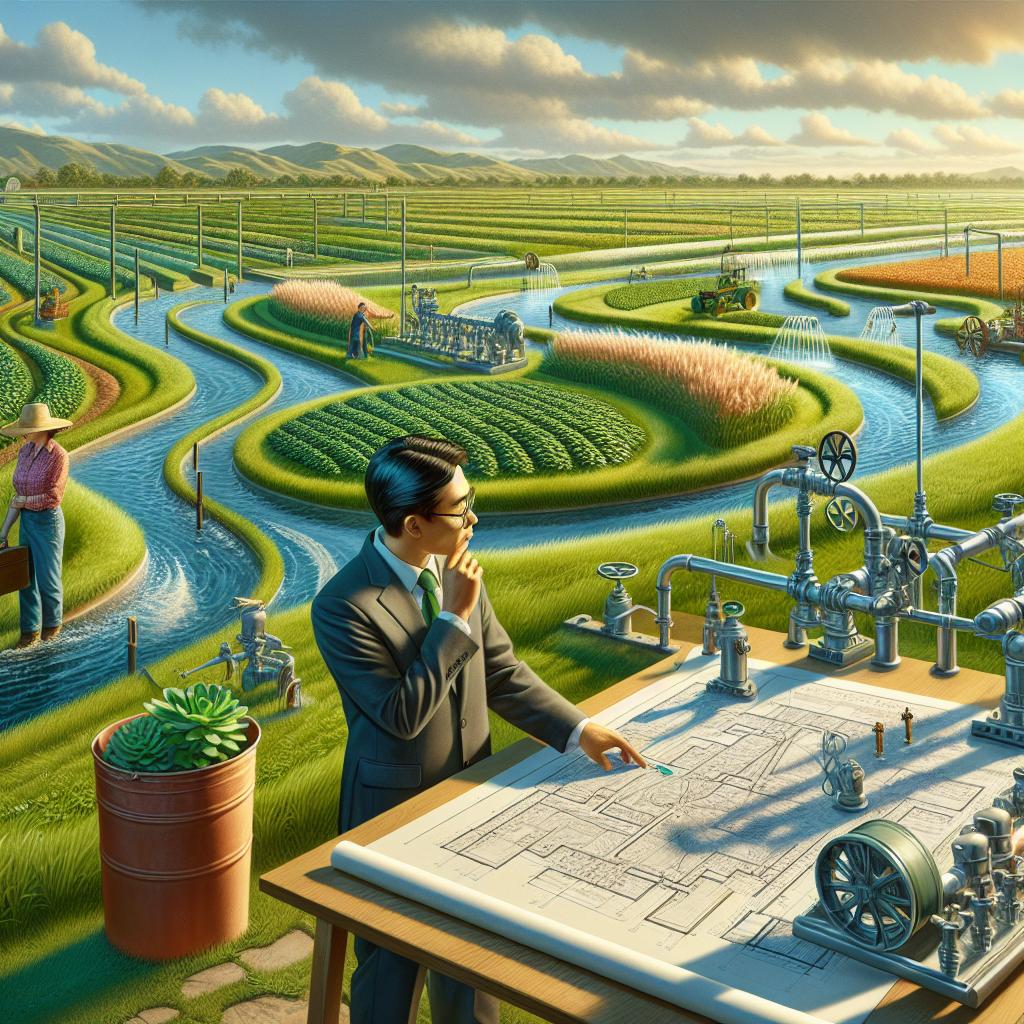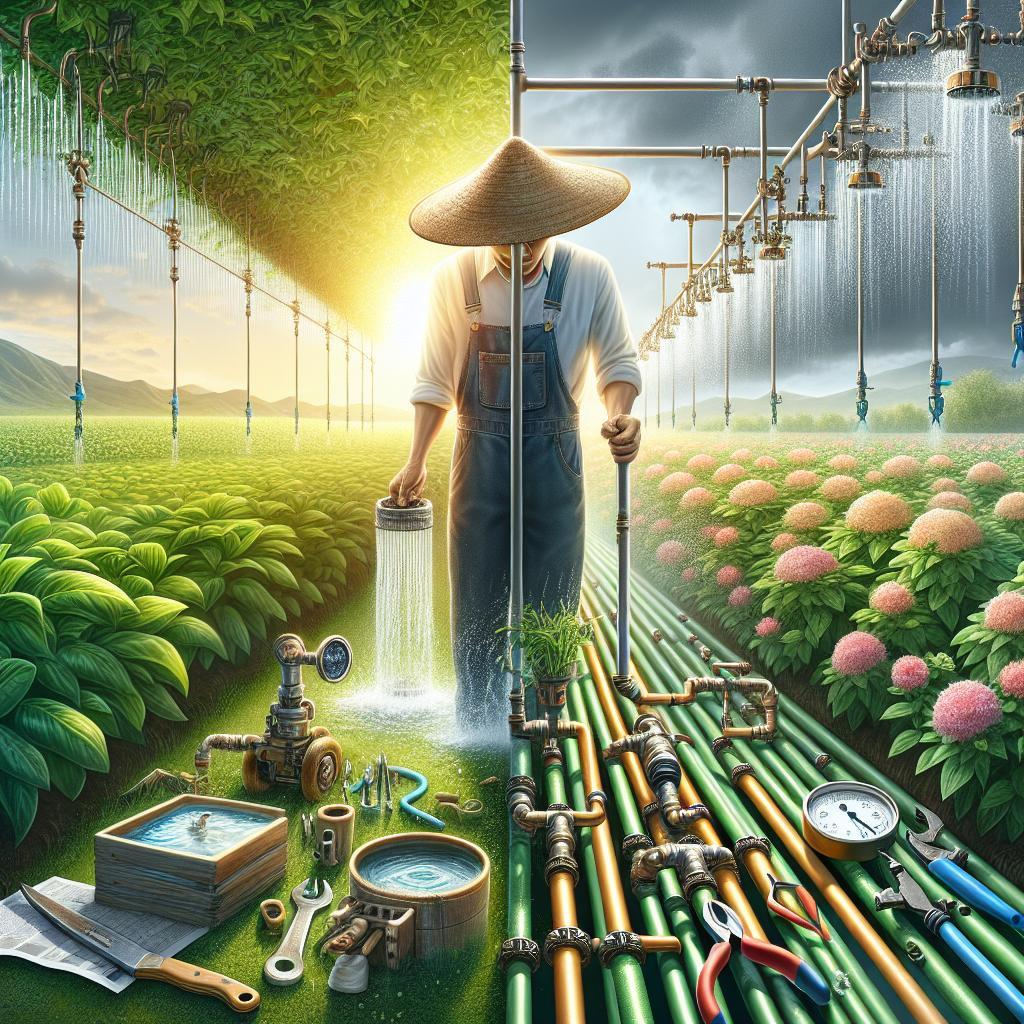This post may contain affiliate links which means I may receive a commission for purchases made through links. Learn more on my Private Policy page.
Keeping Your Garden Flowing: A Friendly Guide to Irrigation system Maintenance
Imagine a world where your garden thrives, lush and vibrant, while you sip your morning coffee on the porch, basking in the fruits of your labor. Achieving this picturesque scene requires a little more than a sprinkle of luck—it hinges on the heart of your garden: the irrigation system. Just like any othre relationship, nurturing this vital system demands attention and care. But don’t fret! Maintaining your irrigation system for optimal performance can be as straightforward as a Sunday stroll through your garden.
in this article, we’ll take you on a friendly journey through the essential steps to keep your watering system in tip-top shape.Whether you’re a seasoned gardening guru or a blossoming green thumb, our tips and tricks will help ensure your plants receive the perfect amount of hydration, turning your garden into a thriving oasis. So, roll up your sleeves and let’s dig into the joy of irrigation maintenance! Your garden will thank you with every bloom.
Choosing the Right Components for a Thriving Irrigation System
creating an effective irrigation system starts with selecting the right components that cater to your specific needs. Pipes play a vital role; consider materials like PVC and polyethylene for durability and adaptability. Coupled with these are valves, which regulate flow and pressure – invest in durable, corrosion-resistant options to prolong their lifespan. Next, think about your sprinklers or drip emitters. Depending on the area you’re irrigating, choose between overhead sprinklers for larger areas or drip systems for targeted watering, ensuring minimal wastage. Lastly, don’t overlook the importance of a reliable controller, which automates your watering schedule and is essential for efficiency.
When assembling your system, also prioritize filtration and fertilization options to promote healthy plant growth. A well-placed filter keeps debris from clogging your system, while a fertilizer injector can provide essential nutrients directly through the irrigation lines. Consider this simple comparison table to help decide the right components:
| component | Options | Key Benefits |
|---|---|---|
| Pipes | PVC, Polyethylene | Durable, Flexible |
| Valves | Manual, Automatic | Flow Regulation |
| Sprinklers/Emitters | Overhead, Drip | Efficient Watering |
| Controllers | Smart, Manual | Automation, Efficiency |
| Filtration | Sand, screen | Prevents Clogs |
| Fertilization | Injector, Inline | Nutrient Delivery |

Regular Checks and Seasonal Adjustments for Peak Efficiency
To ensure your irrigation system operates at its best, it’s essential to incorporate regular checks into your maintenance routine. this involves inspecting components such as hoses,emitters,and timers to detect wear and tear or potential blockages.You should also examine the system for leaks, which can lead to water wastage and increased costs. Consider creating a checklist to guide you through these inspections:
- Check for leaks in hoses and connectors
- Test the functionality of the timer
- Inspect emitters for clogs
- Clean filters and screens
- Ensure the water source is clear
Seasonal adjustments are equally vital for peak efficiency, as they allow you to adapt to changing weather conditions and plant needs. As temperatures rise or fall, you may need to modify watering schedules and durations. A simple table for tracking these adjustments can help:
| Season | Recommended Watering Frequency | Duration Per Session (minutes) |
|---|---|---|
| Spring | 2-3 times per week | 20-30 |
| Summer | 3-4 times per week | 30-45 |
| Fall | 1-2 times per week | 15-25 |
| Winter | As needed (monitor soil moisture) | Varies |
By establishing a routine of regular checks and making necessary seasonal adjustments, you’ll keep your irrigation system in top shape, ensuring your garden stays lush and thriving throughout the year.

troubleshooting common Irrigation Issues with Confidence
When it comes to keeping your garden thriving, understanding common irrigation problems is key. Start by checking for clogs in your sprinklers or drip lines, as dirt and debris can accumulate over time, causing uneven watering. Simple tools like a hose cleaning attachment or even a thin wire can help eliminate blockages. Also, ensure that your valves and fittings are functioning correctly; leaks can not only waste water but also diminish the efficiency of your system. When examining your setup, pay attention to:
- Uneven Water distribution – Adjust heads or emitters to improve coverage.
- Low Pressure – Check for broken pipes or excessive fittings.
- Too Much Water – Consider adjusting your timer settings.
Another common issue is scheduling. It’s critically important to ensure your timer is accurate and that it accounts for seasonal changes. An incorrectly set timer can lead to over-watering or under-watering, which can damage plants. Make it a habit to inspect your irrigation system regularly, especially after heavy rainfall or storms, as this can shift components out of place. Keep these essential tips in mind:
- Check for signs of plant distress – Wilted, dry, or overly saturated plants can signal underlying irrigation issues.
- Inspect weather patterns – Adjust watering schedules based on recent rain.
- Regular system maintenance – Replace worn-out parts and recalibrate settings as needed.

Sustainable Practices to Boost your System’s Longevity and Performance
Implementing sustainable practices into your irrigation system maintenance not only extends its lifespan but also enhances its performance.One effective strategy is to conduct regular inspections to identify leaks and inefficiencies. This can include checking for damaged pipes, worn-out fittings, and obstructed nozzles. Consider setting a schedule for these inspections, ensuring that every component of your system operates at optimal efficacy. Additionally, you can integrate rain sensors into your setup; these devices shut down the system automatically during rainfall, conserving water and reducing excessive irrigation.
Incorporating eco-friendly products into your routine can also yield significant benefits. Opt for organic fertilizers and non-toxic cleaning agents, which improve soil health without harming local ecosystems. Furthermore, creating a native plant garden can minimize the need for excessive watering and fertilizers. Below is a simple comparison of traditional versus sustainable practices:
| Traditional Practices | Sustainable Practices |
|---|---|
| Frequent water usage | Efficient watering with rain sensors |
| Use of chemical fertilizers | Organic fertilizers |
| Annual replacement of parts | Regular maintenance checks |
In Summary
In the grand journey of nurturing a vibrant landscape, your irrigation system is much more than mere pipes and valves—it’s the lifeblood of your garden.By taking the time to maintain your system with the care it deserves, you not only enhance its efficiency but also foster a flourishing surroundings that brings joy to your home and feasts for the eyes. Remember, each simple check and adjustment is like watering a seed—you may not see the results promptly, but with patience and consistency, you’ll cultivate a thriving oasis.
So, roll up those sleeves, grab your trusty tools, and let the adventure of irrigation care begin! After all, a well-maintained system is not just about function; it’s about crafting a sustainable future for the plants you cherish. Happy gardening, and may your gardens bloom brighter than ever! 🌼🌿
This post may contain affiliate links which means I may receive a commission for purchases made through links. Learn more on my Private Policy page.

